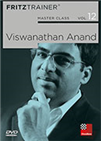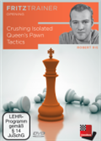The tiger returns
 A new chess king had been crowned in 2013, and he had to quickly prove his worth in another match. Only a year after becoming world champion, Magnus Carlsen was faced with the challenge of trying to defend his title for the first time. His first victory had garnered massive media attention around the world, especially in Norway, where a new national hero prompted an unprecedented chess boom.
A new chess king had been crowned in 2013, and he had to quickly prove his worth in another match. Only a year after becoming world champion, Magnus Carlsen was faced with the challenge of trying to defend his title for the first time. His first victory had garnered massive media attention around the world, especially in Norway, where a new national hero prompted an unprecedented chess boom.
The favourites to become the new challenger were Levon Aronian, who had been ranked second in the world ranking in every FIDE list but one since April 2013, and the ever-dangerous Vladimir Kramnik. Pundits never fully wrote Vishy Anand off, but it seemed unlikely that the Indian legend would manage to win the Candidates soon after having lost a tough match against Carlsen while facing such strong opposition at 44 years of age.
But the Tiger from Madras prevailed. Anand won the 8-player double round-robin tournament in style, collecting three wins and eleven draws to finish a full-point ahead of second-placed Sergey Karjakin. The man from Chennai, ranked eighth in the world when he gained the right to have a rematch, became the second-oldest player to win a Candidates Tournament, behind Viktor Korchnoi.
Getting the match going was no easy task, as less than twelve weeks prior to the scheduled start Carlsen was unhappy with the venue and the financial arrangements, which prompted him to request a postponement. In the end, the contest took place as scheduled. Then-FIDE President Kirsan Ilyumzhinov and Agon Limited managed to sign an agreement with the regional governor of Russia’s Krasnodar Region, Aleksandr Tkachyov, for the match to take place in Sochi.
The rematch was played on November 8-23. For a second year in a row, it was decided before the planned twelve games were completed, as Carlsen secured overall victory with a game to spare. The Norwegian had a tougher time the second time around, though.
Anand loses, bounces back
Given the difficulties he had faced in 2013 with the white pieces (he lost twice with that colour), Anand decided to switch to 1.d4 in the rematch. His choice worked out just fine all throughout the match, as he did not allow his opponent to get chances the times he was the first one to move. As Carlsen put it in an interview with Anastasiya Karlovich:
Last time I had playable positions with both colours. This time, apart from the first game, I didn’t get to play with black at all. I just had to defend, and then it is much more difficult.
 This DVD allows you to learn from the example of one of the best players in the history of chess and from the explanations of the authors how to successfully organise your games strategically, and how to keep your opponent permanently under pressure.
This DVD allows you to learn from the example of one of the best players in the history of chess and from the explanations of the authors how to successfully organise your games strategically, and how to keep your opponent permanently under pressure.After failing to make the most of his chances in game 1, though, Carlsen was the first one to score, as he defeated Anand’s Berlin Defence in the second game of the match. Would we see a repeat of the 2013 match, with Anand unable to recover after going down on the scoreboard?
Not at all. The Indian immediately levelled the score.
Out of a Queen’s Gambit Declined, Anand grabbed the initiative on the queenside, somewhat compromising his pawn structure to get a passer on the c-file. Carlsen could not do much against his opponent’s excellent preparation and found himself in a worse position. In the diagrammed position, Black is already in deep trouble, but his 28...Ba5 made things easier for Anand — 29.Qa6 Bxc7 30.Qc4
The pin along the c-file is lethal. Carlsen tried 30...e5 31.Bxe5 Rxe5, but after 32.dxe5 Qe7, Anand had no trouble finding 33.e6
There is nothing Black can do. Resignation came after 33...Kf8 34.Rc1.

Anand beat Carlsen in game 3
This was the first game Carlsen ever lost in a World Championship match (one of only two in 48 classical games so far). The youngster was not unbeatable, and Anand looked as strong as ever, showcasing the strength of his preparation, which according to his opponent was almost impossible to equal at the time. Carlsen later confessed:
In general Anand is better prepared than I am, and that has been the case for many years. Even though we try our best, it’s difficult to close the gap.
Anand played the Sicilian Defence in game 4 and defended a slightly inferior position until getting a 47-move draw. A draw was also seen in game 5.
Select an entry from the list to switch between games
Mutual blindness
There was a clear turning point in the 2014 match. The tension was rising, as Anand’s chances to take back the title increased in the eyes of the chess enthusiasts all around the world. But then came game 6, when the Indian wasted a huge chance to take the lead, and even went on to lose against the champ.
 The aim of this DVD is to offer the viewer tactical exercises that also illustrate the attacking prospects within IQP positions. The content of the DVD emphasizes the importance of understanding this type of pawn structure.
The aim of this DVD is to offer the viewer tactical exercises that also illustrate the attacking prospects within IQP positions. The content of the DVD emphasizes the importance of understanding this type of pawn structure.
Carlsen’s 26.Kd2 was a blunder, as it allowed 26...Nxe5 — after 27.Rxg8, Black can give an intermediate check with 27...Nxc4, and after 28.Kd3 there is 28...Nb2+ 29.Ke2 Rxg8. Had Anand found this move, he would have ended up two pawns up in a winning position.
Instead, in a case of mutual blindness, the veteran went for 26...a4, which in fact gives White an advantage. Carlsen did not falter again, and ended up getting what turned out to be the crucial win of the match.

The body language says it all — Anand and Carlsen during game 6
The ever-straightforward Garry Kasparov later told Der Spiegel that the quality of the games in this match was not as high as the quality in the previous match. The former world champion elaborated:
The quality of the games was not so high, due to nerves, though for some fans this uncertainty and the potential for mistakes creates drama. Anand missed quite a few chances, and had he found them all, Carlsen would have been pushed to the limit. As it was, Magnus did not have to play his best chess to win the match.
Tense final games
An experienced fighter, Anand decided to put all his hopes on his games with the white pieces, returning to the Berlin Defence when he had the black pieces in the second half of the match. In games 8 and 10, when he had white, he faced an old line of the Queen’s Gambit Declined and a Grünfeld Defence, and could not get past Carlsen’s defences. The tension continued to rise: there were only two games left, and the Indian was still down on the scoreboard.
In another Berlin Defence, Anand got an easier position to play out of the opening. An impatient sacrifice wrecked his winning chances at once, though.
 Let our authors show you how Carlsen tailored his openings to be able to outplay his opponents strategically in the middlegame or to obtain an enduring advantage into the endgame.
Let our authors show you how Carlsen tailored his openings to be able to outplay his opponents strategically in the middlegame or to obtain an enduring advantage into the endgame.
Had 27...Rb4 ended up working for Black, this move would have gone into the history books as a memorable illustration of the value of the initiative over material, as after 28.Bxb4 cxb4 Black gets more active play with the bishop pair and a passer on the b-file.
However, the exchange sacrifice was simply unsound, with Anand calling it “a bad gamble”. Carlsen managed to open up lines for his rooks and showed good nerves to convert his advantage into a 45-move victory. Exactly a week before turning 23 years old, the Norwegian had defended his title against a more-than-worthy opponent.

“I got this” — Magnus Carlsen
In typical, confident style, Carlsen shared his happiness on Twitter while also showing he was ready to go for more — ‘Two down, five to go’, wrote the champ, referring to Kasparov’s record of six victories in World Championship matches.

Select an entry from the list to switch between games
Links


















 A new chess king had been crowned in 2013, and he had to quickly prove his worth in another match. Only a year
A new chess king had been crowned in 2013, and he had to quickly prove his worth in another match. Only a year 








